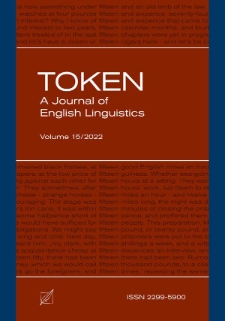Digital Library of the Jan Kochanowski University contains 13 273 digital objects
Object
Title: “Hello, my name is Coronavirus” : Popularizing COVID-19 for children and teenagers
Creator:
Group publication title:
Contributor:
Newman, John G. Ed. ; Dossena, Marina. Ed. ; Shvanyukova, Polina. Ed. ; Bianchi, Francesca. Guest ed. ; Bruti, Silvia. Guest ed. ; Cappelli, Gloria. Guest ed. Manca, Elena. Guest ed.
Abstract:
The aim of this paper is to examine the popularization strategies adopted in texts destined for children and teenagers which deal with COVID-19. It is well documented that the age and the cognitive profile of the target reader have a strong bearing on the structure and nature of a text (Bruti this volume) and that popularization strategies are adjusted in different ways (Turnbull 2015). As Kolucki and Lemish (2011) emphasize, there is a need for communication with children in a way that is age-appropriate and suitable to their needs and interests. Following this research strand, in this paper we analyze the popularization strategies associated with the explanation of coronavirus in relation to the age of the addressee. To this purpose we focus on English booklets and websites dealing with COVID-19 which address two different age groups, children and teenagers. Attention is paid to examples that highlight popularization strategies on the basis of their verbal and visual elements. The basic methodological framework of this study is discourse analysis, with reliance on notions taken from multimodality (Bateman 2014; Kress – van Leeuwen 2020). This provides instruments suitable for identifying cases where the visual mode interacts with the verbal mode to support popularization strategies.
Table of contents:
Spis treści Francesca Bianchi, Silvia Bruti, Gloria C appelli and Elena Manca, Introduction 5 Elena Manca and Cinzia Spinzi, A cross-cultural study of the popularization of environmental issues for a young audience in digital spaces 19 Silvia Bruti, Ecology for children: Examples from popularizing texts in English and Italian 47 Katia Peruzzo, Empowering children: The UN Convention on the Rights of the Child and its English and Italian child-friendly versions 71 Gianmarco Vignozzi, Kids in the House: How the U.S. House of R epresentatives addresses youngsters 97 Silvia Cacchiani, What is Copyright? Communicating specialized knowledge on CBBC 125 Olga Denti and Giuliana Diani, “Hello, my name is Coronavirus”: Popularizing COVID-19 for children and teenagers 151 Jekaterina Nikitina, Popularizing the Covid-19 pandemic to young children online: A case study 181 Silvia Masi, Disseminating knowledge through TED Talks for children 211 Francesca Bianchi and Elena Manca, Rewriting novels for a young audience: A corpus-assisted comparison between two versions of The Da Vinci Code by Dan Brown 239 Judith Turnbull, Popularizing diversity for children in videos on YouTube 259 Gloria Cappelli, Linguistics for children: The intermodal presentation of English grammar metalanguage in materials for young learners 287 Maria Elisa Fina, Popularizing art for children at the MoMA: A multimodal analysis of the audio-delivered pictorial descriptions 319 Annalisa Sezzi, An intergalactic journey to the popularization of modern art in museum-based websites for children 343
Place of publishing:
Physical description:
Additional notes:
Special issue on popularisation, dissemination and rewriting for young audiences
ISSN:
Publisher:
Jan Kochanowski University Press
Date issued:
Identifier:
oai:bibliotekacyfrowa.ujk.edu.pl:12856 doi:10.25951/9749
Language:
Is part of:
Token : A Journal of English Linguistics
Type:
Access rights:
Format:
Object collections:
- JKU Digital Library > University Publishing > Serial publications > "Token : A Journal of English Linguistics"
Last modified:
Apr 4, 2025
In our library since:
Apr 4, 2025
Number of object content hits:
60
All available object's versions:
https://bibliotekacyfrowa.ujk.edu.pl/publication/9749
Show description in RDF format:
Show description in OAI-PMH format:
| Edition name | Date |
|---|---|
| Olga Denti and Giuliana Diani, “Hello, my name is Coronavirus”: Popularizing COVID-19 for children and teenagers | Apr 4, 2025 |
Objects Similar
Diani, Giuliana Newman, John G. Ed. Dossena, Marina. Ed. Schmied, Josef. Guest ed. Bondi, Marina. Guest ed. Dontcheva-Navratilova, Olga. Guest ed. Perez-Llantada, Carmen. Guest ed.

